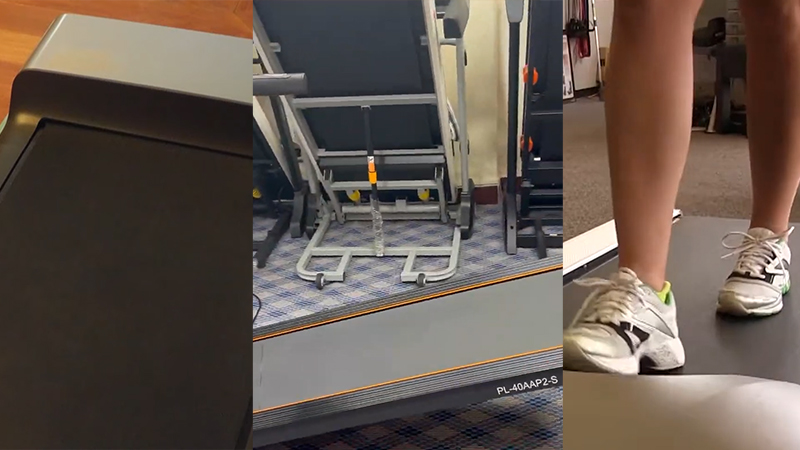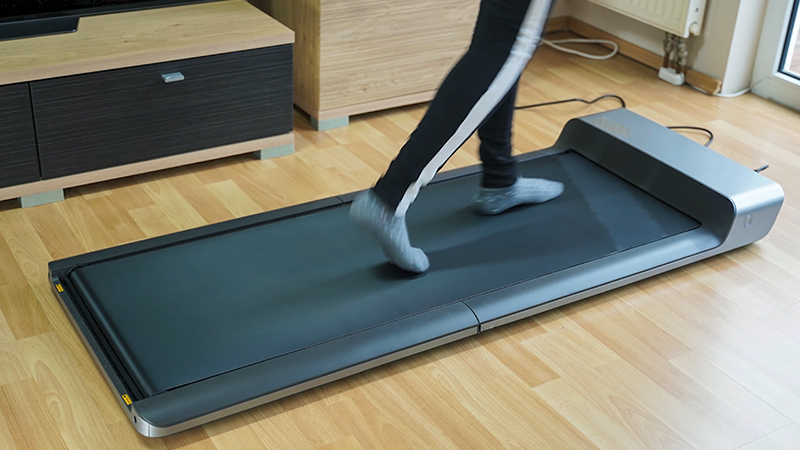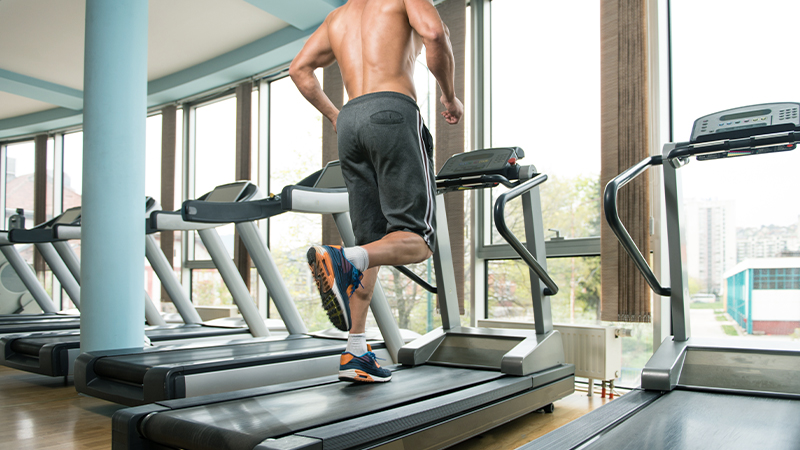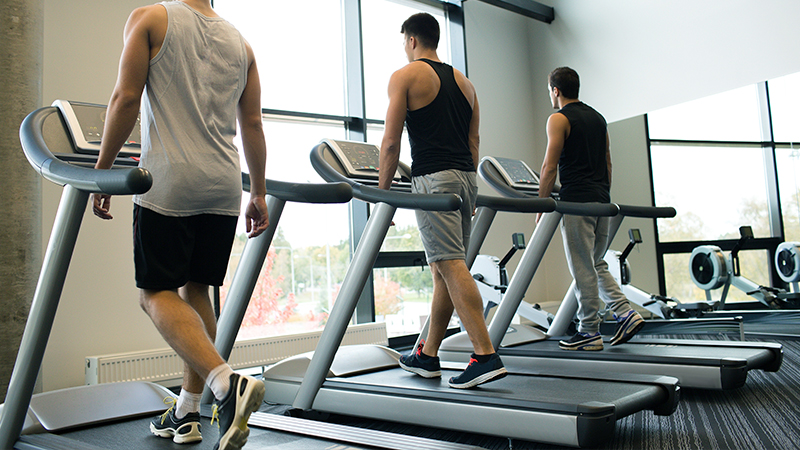When it comes to using a treadmill effectively, understanding terms like P1, P2, and P3 is crucial. These metrics play a significant role in maximizing your workout potential and achieving your fitness goals.
P1 typically refers to the warm-up phase, where you gradually increase your speed and incline to prepare your body for more intense exercise.
Moving on to P2, this stage involves reaching a moderate intensity level, maintaining a steady pace to elevate your heart rate and engage your muscles.
Finally, P3 signifies the peak performance phase, where you push yourself to the limit, increasing both speed and incline for a challenging workout.
By familiarizing yourself with these treadmill settings, you can tailor your routine to match your fitness level and aspirations. Stay tuned to discover how mastering P1, P2, and P3 can take your treadmill workouts to the next level.

p1, p2, p3 meaning on Treadmill Pre-Set Programs
The “p1, p2, p3” likely refer to preset programs on a treadmill. These programs are designed to offer users a variety of workout options with different intensities, durations, inclines, and speeds to cater to different fitness goals and levels.
Here’s a general interpretation:
The Basics of P1, P2, and P3
When it comes to treadmill pre-set programs, understanding the basics of P1, P2, and P3 is crucial. P1 signifies the warm-up phase, a critical starting point that prepares your body for more intense exercise.
P2 is where you transition into moderate intensity, allowing your muscles to work harder and burn more calories.
Lastly, P3 is the peak performance phase, challenging you to push your limits and achieve your highest level of exertion. Mastering these program settings ensures a structured workout that caters to your fitness needs and goals.
How These Programs Improve Your Workout
By incorporating P1, P2, and P3 into your treadmill routine, you can significantly enhance your workout experience.
The progression from warm-up to peak performance optimizes your exercise session, leading to improved cardiovascular endurance, calorie burning, and overall fitness levels.
Utilizing these programs helps you tailor your workouts according to your fitness aspirations, ensuring a well-rounded and effective exercise regimen that maximizes your workout potential.
Explore P1: The Standing or Slow Pace Setting
The Standing or Slow Pace Setting” sounds like an invitation to delve into the first preset program (P1) on a treadmill, particularly focusing on the standing or slow pace setting within that program.
Let’s break it down:
Benefits of Starting with P1

When you kick off your treadmill workout journey at P1, also known as the Standing or Slow Pace setting, you’re setting the stage for a successful exercise session.
By beginning at this level, you allow your body to gradually warm up, preparing your muscles and cardiovascular system for more intense activity ahead.
Starting slow lets you ease into your workout routine, reducing the risk of injury and muscle strain while ensuring a safe and effective start to your fitness regimen.
Who Should Use the P1 Setting
If you’re new to treadmill workouts, returning to exercise after a break, or looking to incorporate a gentle start to your training, the P1 setting is ideal for you.
This beginner-friendly pace allows individuals of all fitness levels to acclimate to the treadmill, build confidence, and establish a solid foundation for future workouts.
It’s particularly beneficial for those seeking a low-impact way to introduce cardio into their routine, making it suitable for individuals recovering from injuries or needing a light workout alternative.
Advancing to P2: The Moderate Walking Speed

The Moderate Walking Speed” indicates a progression from the introductory level (P1) to a slightly more challenging program (P2) on a treadmill.
Let’s break it down:
Transitioning from P1 to P2
When advancing to P2 on the treadmill, you’re moving on to the Moderate Walking Speed phase. This phase is a progression from the initial warm-up phase (P1) and involves increasing your pace to a moderate level.
It’s a crucial stage in your workout routine as it allows you to elevate your heart rate and prepare your body for more intense exercises ahead.
Transitioning smoothly from P1 to P2 ensures a gradual increase in intensity, helping you build endurance and burn more calories effectively.
Health Advantages of P2 Exercise
Engaging in P2 exercise, characterized by a moderate walking speed, offers significant health benefits. This phase allows you to boost your cardiovascular endurance, strengthen your muscles, and enhance your overall fitness level.
Walking at a moderate pace helps improve blood circulation, oxygen flow, and lung capacity. Additionally, it aids in weight management, reduces stress, and enhances your mood through the release of endorphins.
Incorporating P2 exercise into your fitness regimen can be a valuable component in achieving your health and wellness goals.
Taking on P3: The Running Challenge

The Running Challenge” suggests a step up in intensity from the previous preset programs (P1 and P2) to a more demanding level (P3) on a treadmill.
Let’s explore:
Preparing for Intense Cardio with P3
When transitioning to P3 on the treadmill, you’re entering the “Running Challenge” phase. P3, also known as the Running stage, demands higher intensity and stamina compared to P1 and P2.
This phase involves running at a moderate to high speed, pushing your cardiovascular system, and engaging more muscle groups.
During P3, you’ll experience increased heart rate and elevated calorie burn due to the higher intensity of the workout.
This phase is ideal for individuals looking to enhance their endurance, improve overall cardiovascular health, and boost their fitness levels significantly.
When to Incorporate P3 into Your Routine
Incorporate P3 into your treadmill routine once you’ve built enough cardiovascular endurance and stamina from regularly engaging in P1 and P2 sessions.
It’s crucial to listen to your body and assess your fitness level before advancing to the P3 Running Challenge.
You can introduce P3 workouts into your routine when you feel comfortable transitioning from brisk walking to running on the treadmill.
Start by incorporating shorter bursts of running during your workout sessions and gradually increase both the speed and duration as your fitness progresses.
This gradual approach will help prevent injuries and ensure a smooth transition to the higher intensity of the Running Challenge.
How to Select and Customize Programs On a Treadmill
Selecting and customizing treadmill programs can optimize your workout experience to match your fitness goals and preferences.
Here’s a guide on how to do it:
Adjust Settings for Personalized Workouts
To tailor your treadmill workouts to your specific fitness goals, it’s crucial to adjust settings properly.
Start by selecting the program that aligns with your objectives, whether it’s focusing on cardio endurance, weight loss, or overall fitness improvement.
Customize the speed, incline, and duration based on your current fitness level and desired workout intensity. By setting personalized parameters, you can optimize your training sessions for maximum efficiency and effectiveness.
Understand Pre-Set Program Variations
When exploring pre-set program variations on your treadmill, it’s essential to comprehend the specific features and benefits each program offers.
These variations often include options like interval training, hill climbs, heart rate control, or fat burning workouts. Understand the purpose of each program variation to choose the one that best suits your fitness goals.
By selecting the appropriate pre-set program, you can enhance your workout experience and target different aspects of your fitness journey effectively.
Safety Tips for Using Treadmill Programs

Using treadmill programs can enhance your workouts, but it’s crucial to prioritize safety.
Here are some tips:
Recognizing Your Limits
When engaging in treadmill programs, it’s crucial to recognize your limits to prevent overexertion and injury. Listen to your body and pay attention to any signs of fatigue, dizziness, or discomfort.
If you feel any pain or unusual strain, it’s essential to stop immediately and seek medical attention if necessary.
Pushing yourself beyond your limits can lead to injuries and setbacks in your fitness journey. Start with a pace and intensity that is comfortable for you, gradually increasing the challenge as your fitness improves.
The Importance of Cool-Down Phases
After completing a treadmill program, don’t skip the cool-down phase. Cool-down exercises help your heart rate return to its normal pace gradually and prevent dizziness or lightheadedness. Incorporate light walking or stretching exercises to relax your muscles and prevent stiffness.
Cooling down properly helps your body recover after a workout, reduces the risk of muscle soreness, and promotes flexibility. Make sure to allocate sufficient time for a proper cool-down to aid in your overall fitness and well-being.
Frequently Asked Questions
What are P1, P2, and P3 on a treadmill?
P1 is a warm-up phase for beginners, P2 is the Moderate Walking Speed phase to build endurance, and P3 is the Running Challenge phase for significant endurance enhancement.
How important is customizing treadmill programs?
Customizing programs aligns with fitness goals, essential for personalized workouts to optimize effectiveness.
What safety tips are crucial while using treadmill programs?
Understanding limits to prevent overexertion and injury, and incorporating cool-down phases for recovery and well-being post-workout.
Conclusion
Understanding treadmill metrics like P1, P2, and P3 is key to maximizing your workout efficiency and reaching your fitness targets.
P1 serves as a beginner-friendly warm-up phase, while P2 focuses on building endurance through moderate walking speed, and P3 offers a challenging running phase to enhance your stamina significantly.
By customizing treadmill programs to suit your fitness objectives and adjusting settings accordingly, you can tailor your workouts for optimal results.
Remember to prioritize safety by knowing your limits, avoiding overexertion, and incorporating cooldown periods post-workout to support your recovery and overall well-being.
Mastering these treadmill metrics will elevate your fitness journey and help you achieve your desired fitness outcomes.
I am a fitness equipment salesman and a gym trainer with over ten years of experience in the industry.
I have worked with many brands such as Adidas, Nike, Under Armour, and more to provide my customers with the best product for their needs. I love working in this industry because I get to work with people from all walks of life.
I have been in this industry for over ten years now and I plan on continuing to work in it for many more years to come.